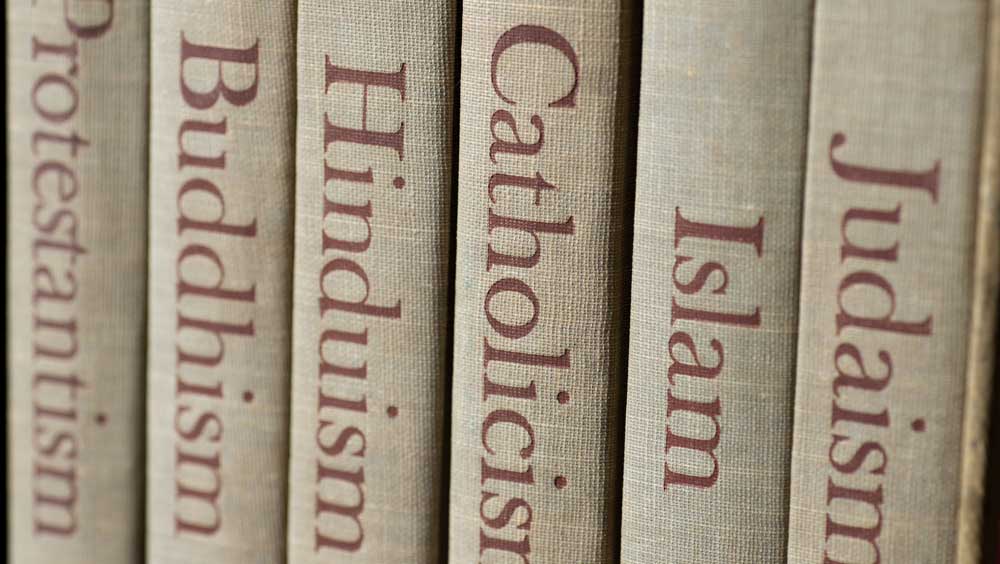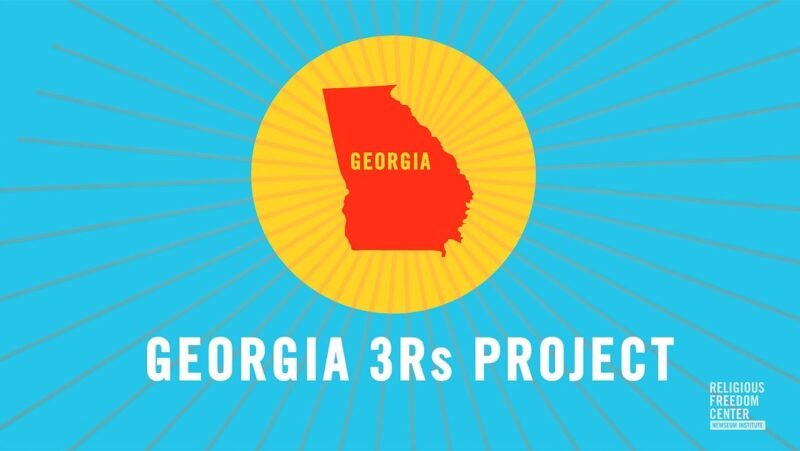What Is Religious Literacy?

The First Amendment protects religious freedom. Religious literacy helps us know, understand and defend religious freedom for ourselves and others.
What is religious literacy? Everything you need to know
Put simply, religious literacy is understanding how different religious traditions – one’s own and others’ – impact people’s lives and our society and understanding how society impacts religious traditions.
Religious literacy is technically the “ability to discern and analyze the intersections of religion with social, political and cultural life,” a definition developed by scholar Diane Moore and adopted by the American Academy of Religion, a scholarly association.
In other words, it means understanding the beliefs, practices and history of different traditions. Importantly, it also means recognizing how religion affects – and is affected by – culture, politics and society.
How does religious literacy relate to the First Amendment?
The First Amendment protects the innermost beliefs of people of any religious tradition or none. It also protects religious exercise and prevents government from favoring one religion over any other or favoring religion over the lack of a religion.
Religious literacy means a basic understanding of the diversity of behaviors and communities of belonging that characterize our diverse society, all of which are protected by the First Amendment.
The First Amendment only prevents the government from infringing on freedoms. But with religious literacy, everyone can understand and help protect the rights named by the First Amendment, including religious freedom, for themselves and others.
Religious literacy means not just having a basic understanding of the way religious doctrines and practices change over time and a basic familiarity with the ways that religion and society shape one another. It also means recognizing religious differences openly, including the differences in beliefs and practices among individuals within a religious community. By becoming religiously literate, we become better able to protect the First Amendment rights of others.
Why is religious literacy important?
Religious literacy educators advocate for learning about religions for many reasons, including the need to counter misunderstanding and discrimination.
According to the National Council for the Social Studies, “Knowledge of religious differences and the role of religion in the contemporary world can help promote understanding and alleviate prejudice.”
The NCSS says this knowledge is “absolutely necessary for understanding and living in a world of diversity.”
Similarly, religious literacy can help us understand when people reference religion in political and other conversations. For example, if a candidate for office gives a speech about a “city on a hill,” a listener with religious literacy can identify the biblical origins of that phrase.
It can help us understand global events. For example, knowing that colonization often invoked religious justifications can give clues to a place’s history and culture.
What should someone know to be religiously literate?
Religious literacy means putting religion in context. Understanding key characteristics of religions as described by scholars including Diane Moore are a good starting place.
Religious traditions have diversity within them. Even within one tradition, different communities and practitioners may have unique ways of expressing their religious identities.
Religions typically change over time. While religious traditions may remain consistent in some ways through a religious group’s history, or at least make claims to have remained unchanged, beliefs and practices generally evolve over time.
Nevertheless, while it is true that religions may change over time (and that people may change their faiths or how they observe their faiths) their right to do so is protected. From the perspectives of the religiously observant, the obligations imposed by their religions may not be malleable or a matter of discretion and that compelling them to be so is seen as an affront to a fundamental aspect of their identities.
Religion is a big part of public life and society, not only within an individual’s home or religious community. Religion shapes – and is shaped by – culture, politics and many social factors.
Religious traditions often feature shared beliefs. Beliefs can include philosophies, theologies, doctrines or scriptures.
Religious traditions include specific acts or behaviors. For example, religious traditions can be expressed through rites, rituals and daily practices.
Finally, belonging is a key component of religious traditions. Religious individuals gather into and identify with specific communities. They may join those communities not only because they share certain religious commitments but also because they share other identities (such as racial, ethnic, national, political, gender, sexual orientation or other identities). Forming religious communities, whether denominations or individual congregations, is an essential aspect of freedom of religion and freedom of assembly.
How can religious literacy grow?
Teaching in schools
Teaching about religion in schools can improve religious literacy.
As government institutions, public schools may not advocate for or pressure students to follow any particular religious tradition.
RELATED: Prayer in school: What's protected by the First Amendment?
But schools can help students learn about a variety of religious traditions. Schools can also help students see how religion has played a role in history, art, literature and many other school subjects.
The National Council for the Social Studies has guidelines for teaching about religion in public schools.
Awareness for adults
Stephen Prothero, author of “Religious Literacy: What Every American Needs to Know — and Doesn’t,” said in a 2007 discussion with the Pew Research Center, “religious illiteracy is a problem, not only for Americans to understand what’s going on here with Democrats and Republicans, but also to understand what’s going on in the world.”
Pew offers a free online quiz of religious knowledge along with research on Americans’ knowledge and gaps.
Those who want to further develop their religious literacy skills can stay curious when consuming media from news to TV shows.
For example, when watching movies that include religious elements, use a critical eye.
Consider whether portrayals of religious communities are insightful and nuanced or if they reinforce harmful stereotypes.
Always try to identify whether a source is speaking about religion devotionally or academically. Remember that no one person can speak for an entire group.
Election Night 2024 Through the Lens: Press Capture Historic Event
Watch: Does Religious Freedom Matter in 2021? African American Perspectives
Related Content

